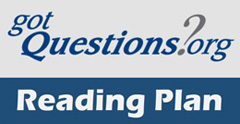THE BIBLE
Bible Literary Forms

The Bible is not just God's Word to His creation, it's also a work of literary art. And the type of literary form has a great influence on how we should interpret the passage.

Day One: Forms of Biblical Literature
One of the most intriguing facts about the Bible is that, while it is God's communication, human beings were part of the writing process. As Hebrews 1:1 says, "God spoke to our forefathers through the prophets at many times and in various ways." The "various ways" include different literary genres...
Read More

Day Two: Biblical Genres
The Bible is a work of literature. Literature comes in different genres, or categories based on style, and each is read and appreciated differently from another. For example, to confuse a work of science fiction with a medical textbook would cause many problems...
Read More

Day Three: Benedictions
A benediction is a declaration of blessings from God upon His loved ones. Benedictions are found at the close of some New Testament epistles...
Read More

Day Four: Parables
A parable is, literally, something "cast alongside" something else. Jesus' parables were stories that were "cast alongside" a truth in order to illustrate that truth. His parables were teaching aids and can be thought of as extended analogies or inspired comparisons...
Read More

Day Five: Proverbs
While many questions can be asked and answered about the biblical book of Proverbs, ascertaining the exact definition of a proverb, including its form, purpose, and interpretation, is rather difficult! Scholars...debate various definitions of what a proverb is...
Read More

Day Six: Epistles
The word epistle comes from the Greek word epistole that means "letter" or "message." Epistles were a primary form of written communication in the ancient world, especially during New Testament times...
Read More

Day Seven: Chiastic Structure
A chiasm (also called a chiasmus) is a literary device in which a sequence of ideas is presented and then repeated in reverse order. The result is a "mirror" effect as the ideas are "reflected" back in a passage...
Read More

Day Eight: Antithetical Parallelism
Antithetical parallelism provides an antithesis, or contrast. A verse containing antithetical parallelism will bring together opposing ideas in marked contrast. Instead of saying the same thing twice, it says one thing and then a different thing...
Read More

Day Nine: Emblematic Parallelism
Emblematic parallelism is constructed with a symbol or a metaphor (an emblem) that is placed side by side (in parallel) with its meaning. A verse that exhibits emblematic parallelism will feature an illustration and its interpretation...
Read More

Day Ten: Synonymous Parallelism
Synonymous parallelism is a poetic literary device which involves the repetition of one idea in successive lines. The first half of a verse will make a statement, and the second half will essentially say the same thing in different words...
Read More

Day Eleven: Synthetic Parallelism
Because there's so much poetry in the Hebrew Bible, it's fitting to familiarize ourselves with the basics of Hebrew poetry. What is it that makes a Hebrew poem poetic? In a word, parallelism...
Read More
Image Credit: Bobby McKay; "A thought for Lent, Proverbs 22:9"; Creative Commons
comments powered by Disqus
Published 11-4-15

